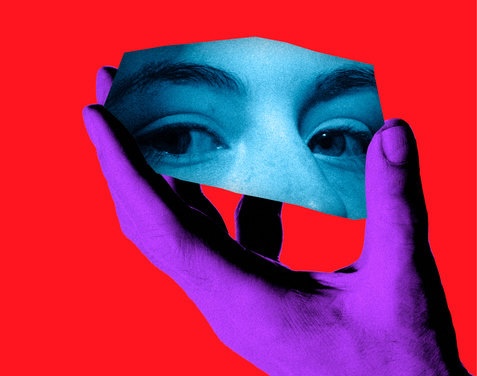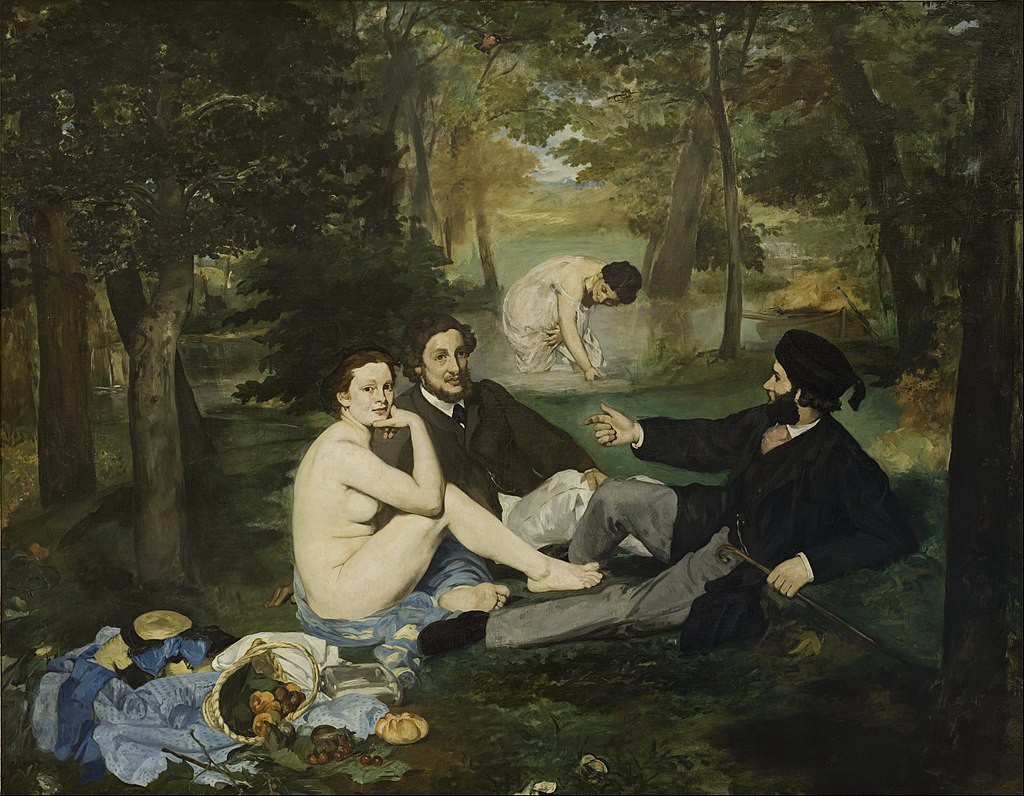Reading Lists
10 Feminist Crime Novels Subverting the Dead Girl Trope
These writers are reimagining true crime to reclaim the role of women as more than just victims

The first episode of True Detective, when it appeared in 2014, presented what has become an iconic image of the female crime victim: the stripped, naked body of a white woman, her skin ghostly pale in death, hands bound, antlers sprouting from where her head should be. In the shot, she not only has no face but seems to have no head at all, reduced to her most fetishized parts. As the essayist Alice Bolin has noted, crime fiction as a genre is haunted by the specter of the Dead Girl. In the typical murder mystery, her inert body sets the plot in motion. She is the “victim,” her death the pretense for an intrepid sleuth’s quest for truth; a mystery set in place by one man is tidily solved by another. In these kinds of stories, Bolin writes, “the victim’s body is a neutral arena on which to work out male problems,” another site for the reinforcement of patriarchal norms.
All the novels on this list take a very different approach to writing crime. Drawing inspiration from real-life events, these authors write about complex, complicated men and women, some of them likable, some not. While the trope of the Dead Girl is active in many of these books, in others it is women themselves who are the perpetrators. Many of these books flip the script on the typical whodunnit, turning our attention from the perpetrator onto his victims, while others explode the conventions of the genre entirely, showing less interest in the crime itself than in its aftermath. A couple (be warned) even concern the unspeakable crime of a mother killing her own children.
Inspired by real-life events, like my own debut, In a Dark Mirror, these novels also have an interesting relationship to the genre of true crime. In The Girls, Emma Cline writes from the perspective of one of the teenage groupies who participated in the Manson murders, which were themselves rendered famous in the true crime classic Helter Skelter. One of the narrators of Katie Gutierrez’s More Than You’ll Ever Know is a journalist trying to break into the true crime genre, and Rebecca Makkai’s I Have Some Questions for You features a Serial-like true crime podcast. In many others, the media response to a sensational case and the public’s fascination become elements of the plot. The books on this list seem almost hyper aware that, in writing enjoyable accounts of awful events inspired by real life, this sort of crime fiction walks a moral gray line. Accordingly, some authors embrace the page-turning aspects of the mystery genre, savoring each plot twist, while others take a more self-consciously literary approach. In spite of their diverse subjects, each of the books on this list is, as one reviewer puts it, “defiantly populated with living women.”
The Girls by Emma Cline
A thinly-veiled retelling of the Manson murders, The Girls is narrated by Evie, a precocious 14- year-old who, in the summer of 1969, befriends a group of girls she observes dumpster-diving in her suburban California neighborhood. The girls lead her to “the ranch,” where she meets Russell, a shadowy figure who seems to have outsized power over the group. Decades later, in middle-age, Evie reflects on the time she spent with the infamous cult and how she narrowly escaped being present on the night of the murders. Cline’s debut is a haunting and lyrical evocation of that liminal moment of adolescence when things can go very wrong.
More Than You’ll Ever Know by Katie Gutierrez
Gutierrez took her inspiration for her debut novel from a news story about a man who led a double life for thirty years, married to two separate women, but she refreshes the trope by flipping the script. More Than You’ll Ever Know tells the story of Lore Rivera, who ends up married to two men, moving between one family in Laredo, Texas and another in Mexico City. Years later, Cassie Bowman, an aspiring true crime writer, sets out to investigate the circumstances that led to one of Lore’s husbands murdering the other. Set on both sides of the border, the novel moves between two characters and two timelines. Gutierrez gives us a satisfying murder mystery that is also a thoughtful meditation on the true crime genre.
Women Talking by Miriam Toews
Unlikesome of the books on this list, Toews novel has no surprise twists or sudden reveals. It is, almost entirely, a book about women talking—and it is riveting. The novel is based on the case of so-called “ghost rapes” among women in a Mennonite community in Bolivia, who woke up to find their bodies bruised, their sheets stained with blood and semen—and no memory of what had happened to them. At the beginning of Women Talking, the men responsible—who used horse tranquilizers to knock out their victims—are about to be released and to return to the community. Within the patriarchal structure of their traditional community, the women’s choices are limited: do they stay and forgive these men, stay and fight, or do they leave? The women themselves are illiterate and their conversation is recorded by a sympathetic young man who was spent some time outside of the colony. Toews’s examines the aftermath of sexual assault and questions of justice in an understated literary style that is also, at times, surprisingly funny.
I Have Some Questions for You by Rebecca Makkai
Technically, Makkai’s latest is pure fiction, but I Have Some Questions for you clearly owes a debt to the true crime industry and is as pleasantly addictive and full of ‘90s nostalgia as the first season of the Serial podcast. The narrator Bodie Kane is herself a true-crime podcaster who returns to teach a short course at the boarding school she once attended. When one of Bodie’s students decides to investigate the murder of Bodie’s former roommate and Queen Bee Thalia Keith, whose dead body was discovered over two decades before in the swimming pool, both the case and Bodie’s memories crack wide open. Makkai’s novel is a pleasurable whodunnit, as well as an intelligent #MeToo novel that raises serious questions about our societal obsession with dead (white) girls.
Little Deaths by Emma Flint
One morning in 1965, Ruth Malone wakes up in her garden apartment in Queens to find that her two young children are missing. Based on the Alice Crimmins case, Little Deaths tells the story of how Ruth comes under suspicion for their murder. Flint paints a scalding portrait of the misogyny underlying everyone’s assumptions about Ruth—a single mother who works as a cocktail waitress and who smokes, drinks, and sleeps around. In the end, Ruth’s greatest crime is her failure to manifest her grief in a way that renders her comprehensible to the men—police officers, journalists, and members of the court—who sit in judgement over her.
Vengeance is Mine by Marie NDiaye, translated by Jordan Stump
This enigmatic French novel follows Maître Susane, a middle-aged lawyer who is hired to represent a woman accused of drowning her two children in the bath. Maître Susane is sure that she has encountered Gilles Principaux, the husband of the accused woman, before, but he shows no sign of recognizing her. NDiaye, who shares a writing credit on the screenplay of the 2022 film Saint Omer, has acknowledged that she drew inspiration for this novel from the case at the center of that film about a young Senegalese woman who drowns her baby on the beach. NDiaye’s surreal writing style ensures that there will be no easy answers to the questions the novel raises. This is a crime novel that thrillingly confounds the expectations of the genre.
Hurricane Season by Fernanda Melchor, translated by Sophie Hughes
Melchor, who worked for several years as a journalist in her home state of Veracruz, Mexico, based this dazzling novel on a local femicide. In Melchor’s hands, the murder of a transwoman known to the villagers as The Witch becomes an occasion for a Faulknerian tour de force that examines the role of poverty, machismo, and the drug wars in a fictional Mexican town. While Melchor writes from several points of view, she excels at channeling the toxic masculinity that drives so many of her characters’ worst actions.
Girl A by Abigail Dean
Dean’s debut novel tells the story of Lex, a high-powered lawyer who as a teenager escaped from horrific abuse at the hands of her parents. After her mother dies in prison, Lex is appointed executor of the will, requiring her to get back in touch with her siblings and face the unresolved trauma of her childhood. Dean drew inspiration from real-life sources, including the Turpin family in California and their “house of horrors,” resetting the story in the U.K. While Lex initially seems like an unlikely success story, Girl A ultimately paints a haunting portrait of the long afterlife of trauma.
Notes on an Execution by Danya Kukafka
Kukafka cites Ted Bundy as inspiration, but the murderer in Notes on an Execution becomes a symbolic stand-in for all serial killers—a self-aggrandizing but ultimately mediocre man. Set in the hours leading up to Ansel Packer’s execution, the novel tells the story of Ansel’s life through the eyes of the women around him—including his mother, the sister of one of his victims, and the detective who tracks him down. Kukafka’s lyrical prose and smart framing elevate this Edgar Award-winning novel above the typical serial killer fare.
Bright Young Women by Jessica Knoll
One night in 1978, two women are murdered and two others brutally attacked in their sorority house at Florida State University. Pamela Schumacher, best friend of one of the victims and an ambitious pre-law student, witnesses a man fleeing the scene, becoming the state’s only eyewitness. Bright Young Women is a page-turning reimagining of Ted Bundy’s last murder spree, written from the perspectives of two women, one who survives her encounter with the killer and one who doesn’t. Knoll both capitalizes on and interrogates the lasting public fascination with serial killers while turning the reader’s focus from the misogynistic killer onto the powerful, talented women that he targets.









